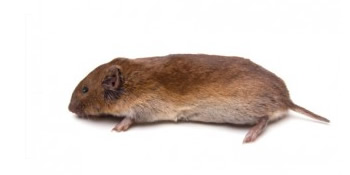Secure Your Yard: Proven Vole Control Approaches Introduced!
Wiki Article
Grasping Vole Bug Control: Extensive Insights on Infestation Prevention and Therapy Approaches
By acknowledging the refined signs of vole infestation early on, we can take positive actions to prevent extensive damage. In this conversation, we will explore the subtleties of vole habits, dig into the recognition of invasion indications, and uncover the most effective prevention and therapy techniques.Recognizing Vole Behavior
Analyzing the foraging patterns of voles supplies beneficial understandings into their behavior and environment choices. By observing their foraging habits, scientists can obtain a much better understanding of where voles prefer to establish their habitats and the degree of their ecological influence.
Research study shows that voles display discerning feeding habits, choosing origins, seeds, and roots - vole pest control. This nutritional preference influences their foraging patterns, leading them to areas abundant in plant life and ground cover. Furthermore, voles are known to create elaborate passage systems for foraging and nesting objectives, showing a high level of flexibility to their surroundings
Comprehending vole actions is essential for executing targeted pest control procedures that disrupt their environment choices and foraging tasks. By researching their habits, specialists can create more effective prevention and therapy strategies to manage vole problems.
Identifying Indications of Vole Infestation
Vole problems can be discovered by recognizing specific signs of their presence in a location. One of one of the most common signs of a vole invasion is the existence of surface paths. Voles develop networks of slim pathways on the ground that are generally about two inches vast. These paths are often located in verdant locations or under mulch or ground cover where voles can move freely and look for food.One more vital indicator of vole infestation is the visibility of small burrow openings in the ground. In addition, voles are understood to leave behind eaten plant stems, roots, and bulbs near their burrow openings, showing their feeding task in the area.
Finding these droppings along runways or near burrow openings can confirm a vole invasion. By being alert for these indicators, residential or commercial property owners can without delay address vole invasions and stop additional damages.
Applying Aggressive Avoidance Actions
To successfully minimize the risks linked with vole infestations, home proprietors can proactively execute a range of preventive procedures intended at safeguarding their landscapes and yards. Furthermore, maintaining garden areas clean and lessening clutter where voles could conceal or nest is crucial in minimizing their presence.Moreover, utilizing all-natural vole deterrents like castor oil-based repellents or killer urine can function as reliable preventative actions. It is likewise recommended to consistently check exterior spaces for any indications read what he said of vole activity, such as runways or tunnel openings, to address potential infestations without delay. By embracing these aggressive avoidance techniques, homeowner can dramatically minimize the possibility of vole damages and maintain the wellness and aesthetics of their landscapes.
Effective Treatment Methods
Integrating targeted capturing techniques and making use of approved rodenticides are important elements of reliable treatment methods for managing vole infestations. Trapping can be an effective way to lower vole populaces, specifically when placed strategically in their active runways. Snap catches and live traps can both be efficient, websites with the latter allowing for the capture and relocation of voles. When utilizing rodenticides, it is essential to comply with safety and security standards to stop damage to non-target pets and animals. Place rodenticides in safe and secure lure terminals to lessen dangers to unexpected targets. In addition, habitat adjustment, such as lowering ground cover and removing sources of food, can help prevent voles from infesting an area. Routine tracking and maintenance are likewise vital elements of effective treatment strategies to guarantee that vole populations are maintained under control. By integrating trapping, rodenticides, habitat modification, and regular monitoring, reliable vole bug control can be attained.
Monitoring and Maintenance Tips
Keeping a systematic routine for surveillance and carrying out regular maintenance tasks is essential to sustain the efficiency of vole parasite control actions. Regular surveillance permits the very early discovery of vole activity, enabling timely intervention prior to infestations get worse. To successfully check vole populaces, tactically put catches can be used in vole runways or near burrow entryways. By routinely inspecting these traps, property owners can evaluate the level of vole activity and change control techniques as necessary.In addition, this contact form preserving a tidy and well-kept landscape is vital in vole prevention. Cleaning away particles, such as piles of timber or dense greenery, gets rid of possible vole habitats. Regularly trimming and trimming lawns plant life assists lower vole concealing areas and minimizes their access to food resources.

Verdict
Finally, grasping vole insect control needs a strong understanding of vole habits, the ability to recognize signs of infestation, applying aggressive avoidance steps, reliable treatment techniques, and consistent tracking and maintenance. By taking a detailed technique to vole control, people can properly handle and stop invasions, inevitably shielding their home and surrounding atmosphere from damages triggered by these little rats.In this discussion, we will check out the nuances of vole behavior, delve into the recognition of invasion indications, and discover the most effective prevention and therapy techniques.Including targeted trapping techniques and utilizing accepted rodenticides are crucial components of reliable treatment approaches for managing vole infestations. To properly monitor vole populaces, purposefully placed traps can be made use of in vole paths or near burrow entries. Evaluating and fixing any damages to these structures ensures that vole control remains efficient in guarding residential or commercial properties from infestations. By including these monitoring and maintenance methods into an extensive vole pest control strategy, people can successfully handle vole populaces and safeguard their residential or commercial properties from damages.
Report this wiki page